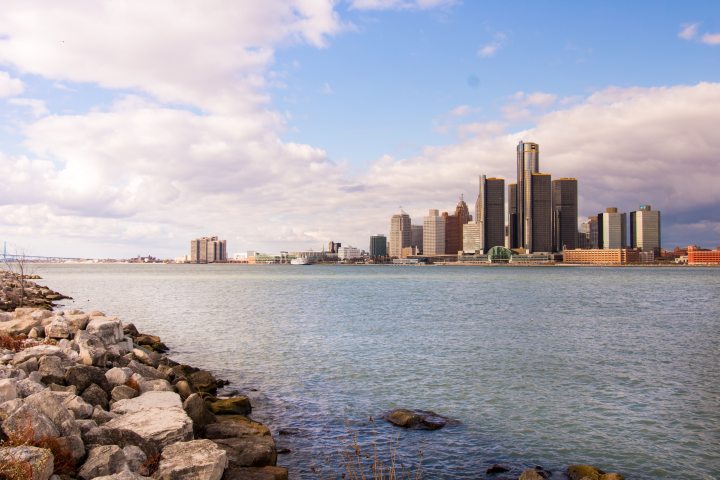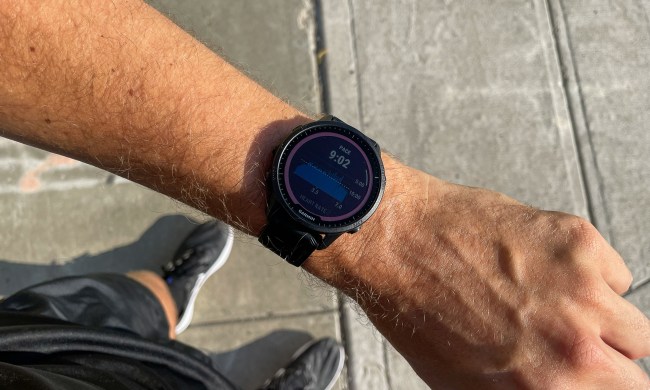
You can’t ignore the symbolism of Detroit’s downtown.
Rising like the fabled Phoenix from the ashes, there’s a new vibrancy marked by the ascending 800-foot, 58-story development initiated by Quicken Loans founder Dan Gilbert. When complete, the tower complex located where the famous J.L. Hudson store once stood will be the tallest building in the state, boasting residential apartments, offices, underground parking, an event space, a conference center, and an observation deck–all wired for the Internet of tomorrow.
The development is just one of several to create “the kind of office space that leading tech companies would want to be in,” Jared Fleisher, a Quicken Loans vice president recently told The Detroit News.
It’s part of a spreading renaissance in the city that includes everything from initiatives to build an intelligent infrastructure to high-speed communications systems, technology investments and autonomous vehicles. The first spark of that renaissance really came to light back at the end of 2016 when Motown flipped the switch on 65,000 new LED streetlights. That marked three years of balanced budgets and surpluses after emerging from bankruptcy. Now the city is free from state oversight of its finances as businesses bring new jobs and investment to the city.
Detroit Rocks the Infrastructure
The rebirth started from the ground up. A lot of municipalities talk about a world where everything will be smarter and more efficient–the so-called Internet of Things–but Detroit is actually doing something about it. For example, telecom companies large and small have been helping the city build out high-speed Internet service, anticipating the kind of exponential growth businesses and consumers will experience as more parts of our lives are connected to the IoT.
Detroit-based Rocket Fiber, for example, has been providing 200-Gbps broadband service to companies locally, ensuring that they have access to the information, customers, and services they need to reach around the world. Rocket also provides Internet service to the city’s year-old QLine streetcars, as well as Wi-Fi for the 65,000-seat Ford Field. The company also installed 10-Gbps service at the revamped Cobo Center, getting it ready for e-sports events and virtual reality exhibitions.
Future Networks
Such communications foresight doubtless inspired Comcast to select Detroit as one of the first places in the U.S. for the company’s MachineQ IoT advanced systems. The so-called LoRanWAN network provides connectivity for infrastructure components (such as monitoring utilities with wireless water meters) as well as for private businesses looking to automate their own infrastructure components and offerings to consumers. The wireless system then connects to Comcast’s backbone, offering businesses countless new opportunities.
The Motor City’s communications initiatives are also one of the reasons why the city was chosen by IDC Government Insights as a winner in its IDC Smart Cities North America Awards this spring. Perhaps not surprisingly, Detroit was singled out for its progress on its transportation infrastructure, particularly smart roads and intersections.
The city is literally making its intersections smart using sensors, video detection systems, intelligent traffic signals, and mobile monitoring tools and alerts. The goal is to improve traffic flow, reduce emissions caused by traffic congestion, increase safety, and allow for real-time control of transportation arteries. The city’s efforts led to a recent $2.2 million Federal grant to help the city deploy vehicle-to-infrastructure (V2I) communication systems at intersections in high-traffic areas in Southwest Detroit, the Riverfront, Corktown, and the Livernois-McNichols corridor. In addition to reducing accidents, the V2I system should improve emergency response times and boost the overall quality of life in the city.
Hub Bubs
As Detroit’s fortunes have blossomed, so too have those of some of its most famous automotive businesses, which are doubling down on investments in future tech. Ford, for example, has moved its autonomous vehicle (AV) hub to Detroit, shifting its electric and self-driving vehicle businesses from its corporate headquarters in Dearborn, Michigan. Ford’s Team Edison group will be based in a renovated clothing factory, part of the rejuvenation of downtown Detroit. Underscoring the company’s confidence in Detroit’s future, Ford recently bought the long-abandoned iconic Michigan Central Station, planning to turn it into a campus of innovation in the city’s Corktown neighborhood.
“We want this station,” said company chairman Bob Ford announcing the purchase, “to be a beacon of development, opportunity, and possibility all over again.”
Meanwhile, across town, GM is building its first autonomous vehicle factory at a facility that was silenced back when the automaker was under federally controlled bankruptcy. The rejuvenated plant, according to the company, will turn out the nation’s first fully autonomous vehicles (no steering wheel required) next year. Furthermore, GM wants those cars to be emission-free.
Indeed, going electric is part of an industry-wide movement and Detroit is very much a part of it, with local automotive companies increasingly focused on electric and plug-in hybrid vehicles, like the pioneering Chevy Volt. Michigan is moving to support those efforts with more than half of its existing charging stations in DTE Energy’s southeast area offering high-speed Level 2 charging.
Building out a smart city means also delivering more advanced services to improve people’s quality of life. So the infrastructure initiatives are reaching out to local healthcare providers and facilities. Better connectivity and information sharing can ultimately save lives. So the Henry Ford Health System’s Innovation Institute has helped create systems like CareTrail, which lets medical professionals securely communicate with each other in real-time to improve patient outcomes. The system is already being used at Henry Ford Wyandotte Hospital located just south of Detroit.
Real Investment in Real Estate
The growing technology support and improvements have boosted confidence and brought more than just one major new building project to Detroit. A stunning new $830 million Bedrock building project on the Monroe Blocks is also planned, for example. It will include a 35-story office tower with 814,000 square feet, 482 residences, and about 169,000 square feet of retail space.
Already underway is the rehabilitation of the 3.5-million-square-foot former Packard plant on the lower east side. An initial site cleanup is just being wrapped up as part of a $300 million renovation of the 40-acre property. When completed, it will include restaurants, an art gallery and an event space. According to Kari Smith, director of development for the project, there are also plans for a brewery to open there next year.
“It will function like a mini city,” Smith told The Detroit News.
The Packard plant can be seen as an example of what’s happening all over town as the Motor City increasingly becomes the smart city. With the infrastructure and tech businesses to support it, Detroit is expected to see more burnishing of its image next year. Look for several famous buildings from the city’s last century–including the Book Tower, Detroit Free Press Building and the David Stott Building–all to get a facelift for new tenants.



